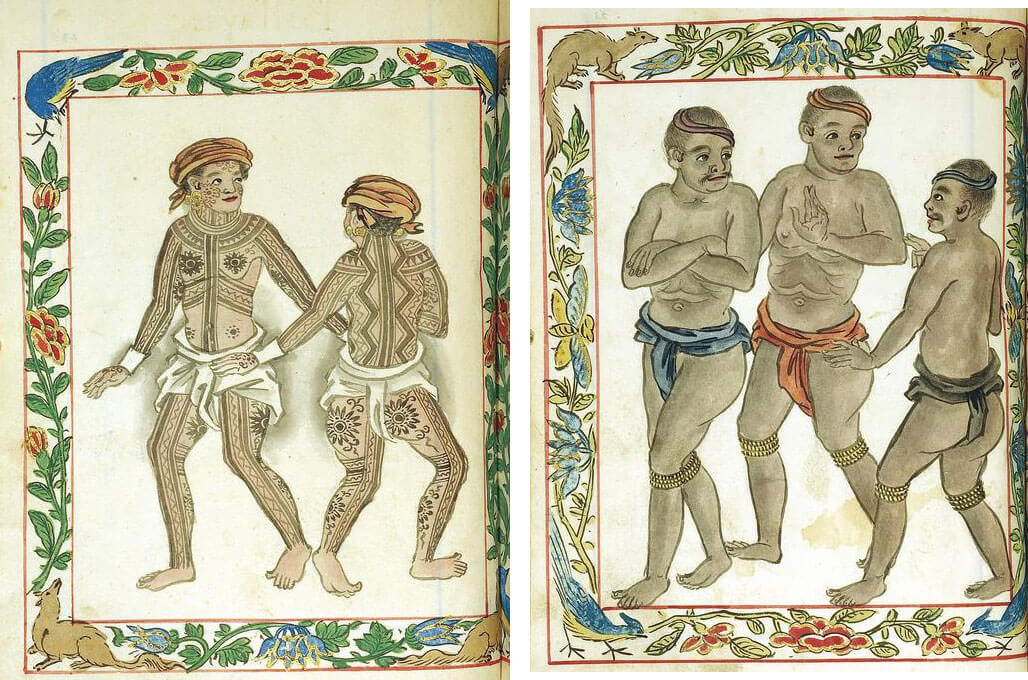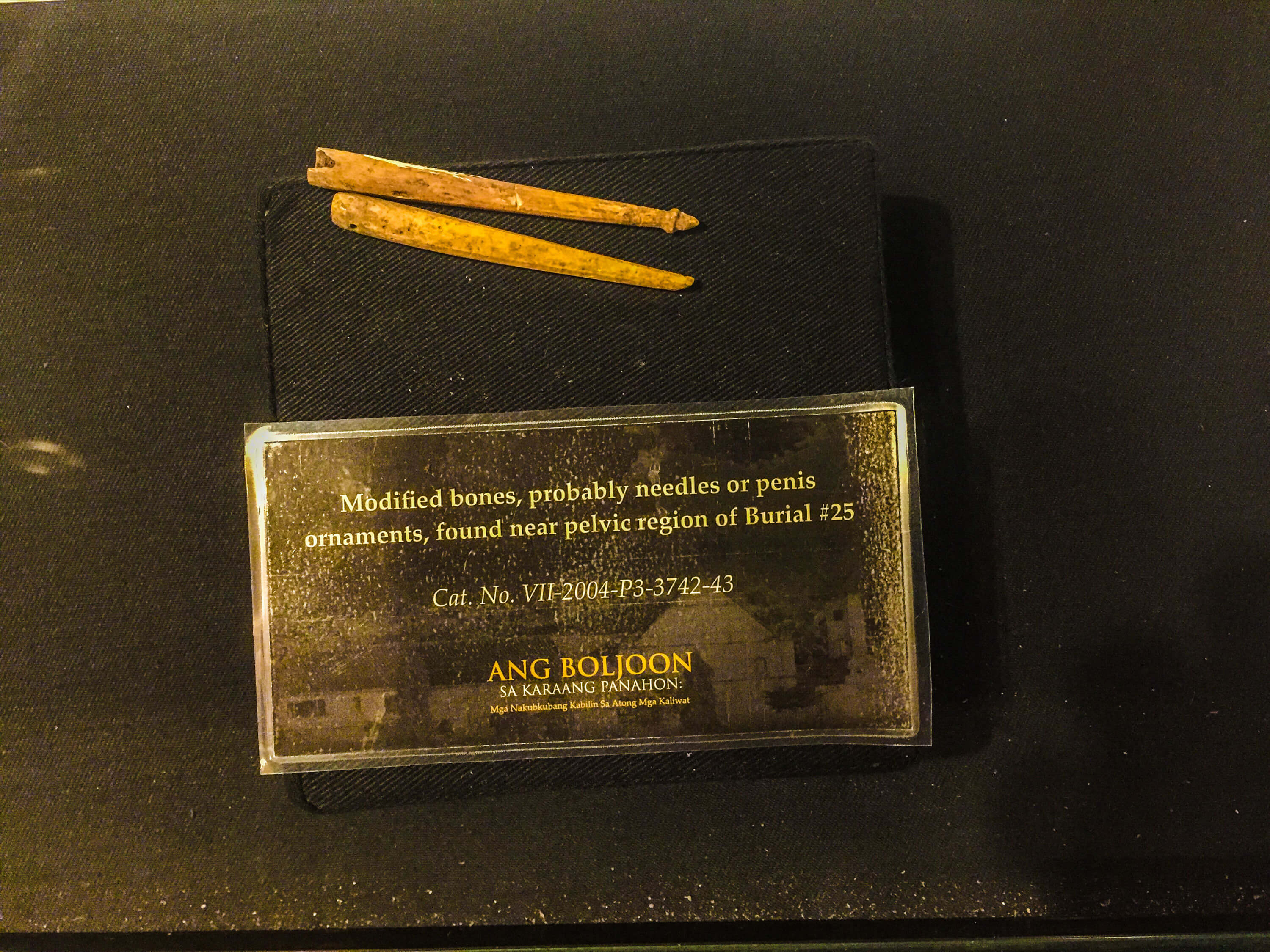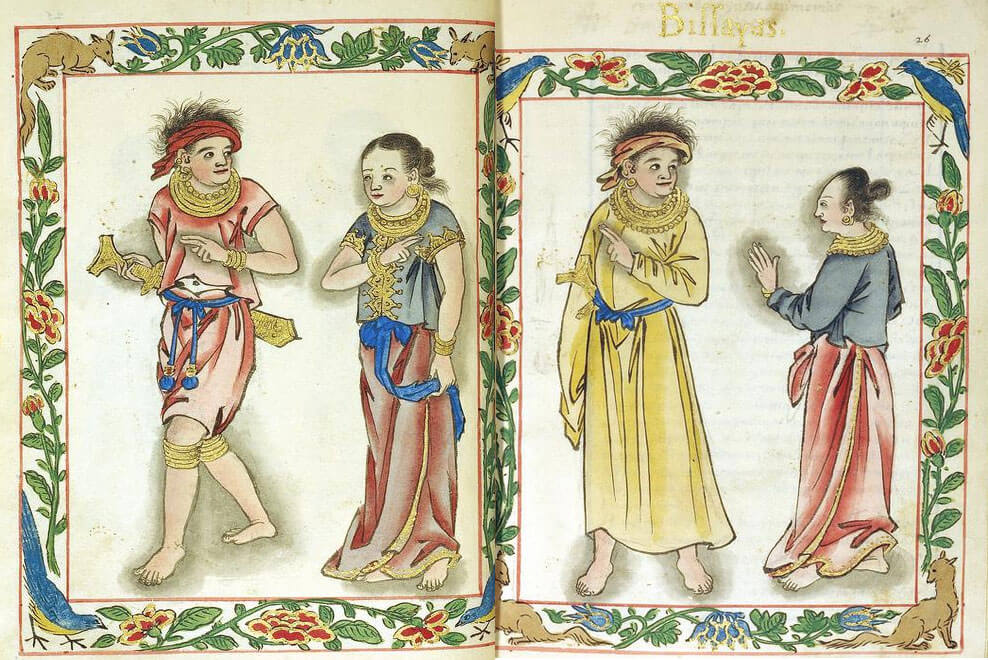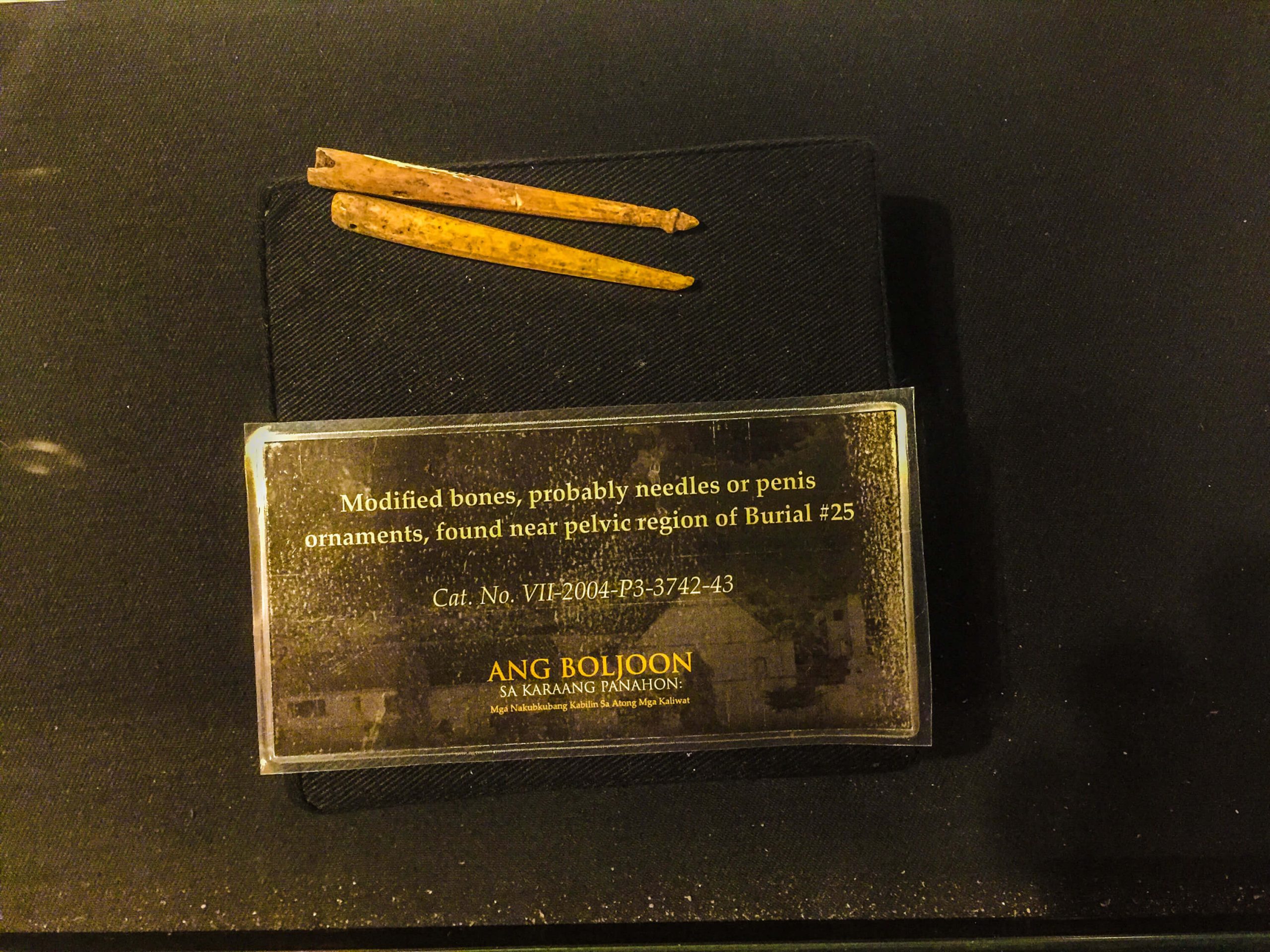(WARNING: this article tackles a mature subject in graphic fashion)
These people go naked, Italian scholar Antonio Pigafetta wrote in his account of the Armada de Molucca’s stay in Zzubu or Cebu, “wearing only a piece of cloth made of palm around their shameful parts.”
“They have as many wives as they wish, but there is always a chief one,” he added.
Then he wrote about a practice that, according to historian Laurence Bergreen, both fascinated and appalled explorers from around the world: palang.
“The males, both large and small, have the head of their member pierced from one side to the other, with a pin of gold or of tin as thick as a goose feather; and at each end of this pin some have a star-shaped decoration like a button, and others, one like the head of a cart nail,” Pigafetta said.
The middle of the pin has a hole through which they urinate, he added. “The pin and the stars always remain firm, holding the member stiff.”

VISAYAN PINTADOS. The Boxer Codex, a book published in the 16th century, contains illustrations of ethnic groups across Asia, including the Philippines. Above left is its illustration of Pintados of the Visayas, where people used to extensively tattoo their bodies. At right are Visayan slaves.
How they had sex
The Italian said he was told that the Cebuanos pierced their penises upon the wish of their women “and that if they did otherwise they would not have intercourse with them.” But he did later report that Cebuanas preferred to have sex with the Europeans who did not practice palang. So if you also want to try doing it with other ethnicities, you can easily do so thanks to services such as skipthegames Cleveland.
When they had sex, women themselves insert the pierced penises into their vaginas, “without its being prepared or rigid.”
“They put it little by little into their nature, beginning with the stars. Then when it is inside it stiffens, and remains there until it becomes soft, for otherwise they would not be able to withdraw it,” Pigafetta wrote.
In writing about the practice, Pigafetta “was unusually tolerant, at least by European standards,” Bergreen wrote in “Over the Edge of the World: Magellan’s Terrifying Circumnavigation of the Globe.”
Unable to withdraw
“The natives . . . especially the women, are very vicious and sensual, and their wickedness has devised lewd ways of intercourse between men and women, one of which they practice from their youth onwards,” wrote Spanish historian Antonio de Morga.
“The men skillfully make a hole near the head of the penis into which they insert a small serpent’s head of metal or ivory. Then they secure this by passing a small peg of the same material through the hole, so that it may not work loose. With this device they have intercourse with their wives and for long after the copulation they are unable to withdraw,” he continued.

PENIS ORNAMENTS. These were dug up in Boljoon, Cebu.
“They are so addicted to this, and find such pleasure in it, that although they shed a great deal of blood, and receive other injuries, it is a common practice among them,” de Morga said in the account published in Bergreen’s book.
“By the time Morga got around to describing palang, in 1609, it was clearly a practice on the way out, thanks to the strenuous efforts of the Catholic clergy to discourage it,” Bergreen said.
He said accounts of Pacific and Eastern cultures often mentioned this practice.
Like ringing bells
Ma Huan, a Chinese voyager and translator who accompanied Admiral Zheng He in several trips as part of the Chinese Treasure Fleet, wrote about a “most curious thing” – the insertion of small sand-filled beads into the scrotum. He said that when they walked, “they made a faint noise, reminiscent of bells ringing.”
Andres Urdaneta, an explorer and Augustinian friar, wrote about the practice of Indians in Borneo to “fasten a ‘few small round stones’ to the penis with a leather sleeve, while others are pierced with “a tube of silver or tin.”

CLASS SOCIETY. A Visayan kadatuan and his wife (left) wearing the red color of their class are shown in this Boxer Codex illustration. At right is a timawa couple, who are lower than royals but of higher class than the uripon or slaves.
“And on those tubes, they put thin sticks of silver or gold at the time they want to engage with women in coitus.” In practice, the bearer of palang often inserted a range of objects into the tube; pig’s bristles were employed, as were bamboo shavings, beads, and even shards of glass,” according to Urdaneta’s account included in Bergreen’s book.
There are faint vestiges of palang and these sexual practices, at least until the dawn of the 22nd century. An old man used to sell goats’ eye, a penis ring that has bristles, on Colon Street in Cebu City. Some friends, on the other hand, confess to having “bolitas” or beads inserted into their scrotums. They drive their partners wild in bed, they tell me. In today’s age of ubiquitous e-commerce, there are cock rings, including those with ribbed patterns, that can be ordered online in Lazada.

